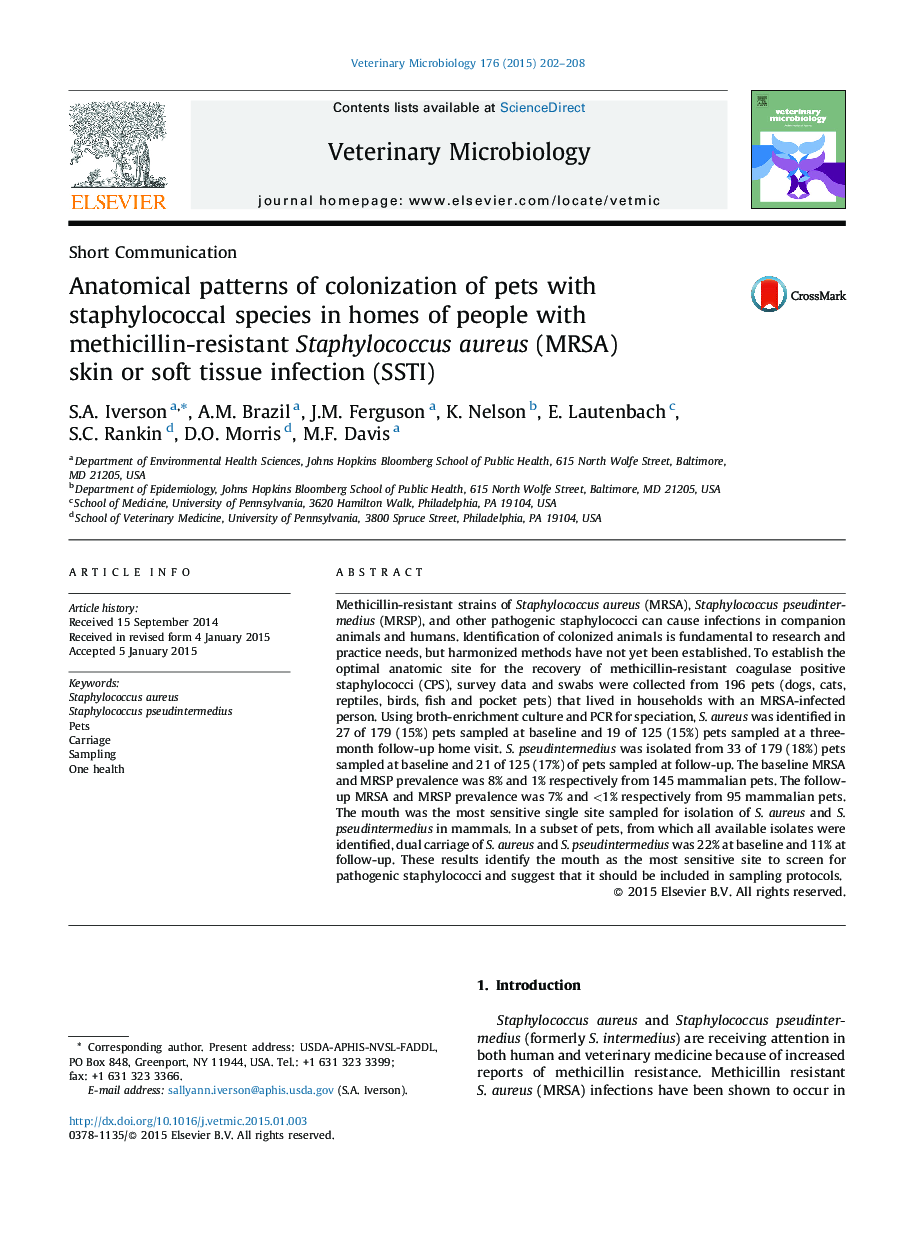| کد مقاله | کد نشریه | سال انتشار | مقاله انگلیسی | نسخه تمام متن |
|---|---|---|---|---|
| 5800141 | 1555353 | 2015 | 7 صفحه PDF | دانلود رایگان |

- Harmonized methods for sampling pets for staphylococcal species are needed.
- We sampled 196 pets with MRSA exposure at four anatomical sites.
- Co-carriage of staphylococcal species was not uncommon.
- The mouth was the most sensitive site for detecting pathogenic staphylococci.
- Staphylooccal screening protocols in pets should include the mouth.
Methicillin-resistant strains of Staphylococcus aureus (MRSA), Staphylococcus pseudintermedius (MRSP), and other pathogenic staphylococci can cause infections in companion animals and humans. Identification of colonized animals is fundamental to research and practice needs, but harmonized methods have not yet been established. To establish the optimal anatomic site for the recovery of methicillin-resistant coagulase positive staphylococci (CPS), survey data and swabs were collected from 196 pets (dogs, cats, reptiles, birds, fish and pocket pets) that lived in households with an MRSA-infected person. Using broth-enrichment culture and PCR for speciation, S. aureus was identified in 27 of 179 (15%) pets sampled at baseline and 19 of 125 (15%) pets sampled at a three-month follow-up home visit. S. pseudintermedius was isolated from 33 of 179 (18%) pets sampled at baseline and 21 of 125 (17%) of pets sampled at follow-up. The baseline MRSA and MRSP prevalence was 8% and 1% respectively from 145 mammalian pets. The follow-up MRSA and MRSP prevalence was 7% and <1% respectively from 95 mammalian pets. The mouth was the most sensitive single site sampled for isolation of S. aureus and S. pseudintermedius in mammals. In a subset of pets, from which all available isolates were identified, dual carriage of S. aureus and S. pseudintermedius was 22% at baseline and 11% at follow-up. These results identify the mouth as the most sensitive site to screen for pathogenic staphylococci and suggest that it should be included in sampling protocols.
Journal: Veterinary Microbiology - Volume 176, Issues 1â2, 23 March 2015, Pages 202-208